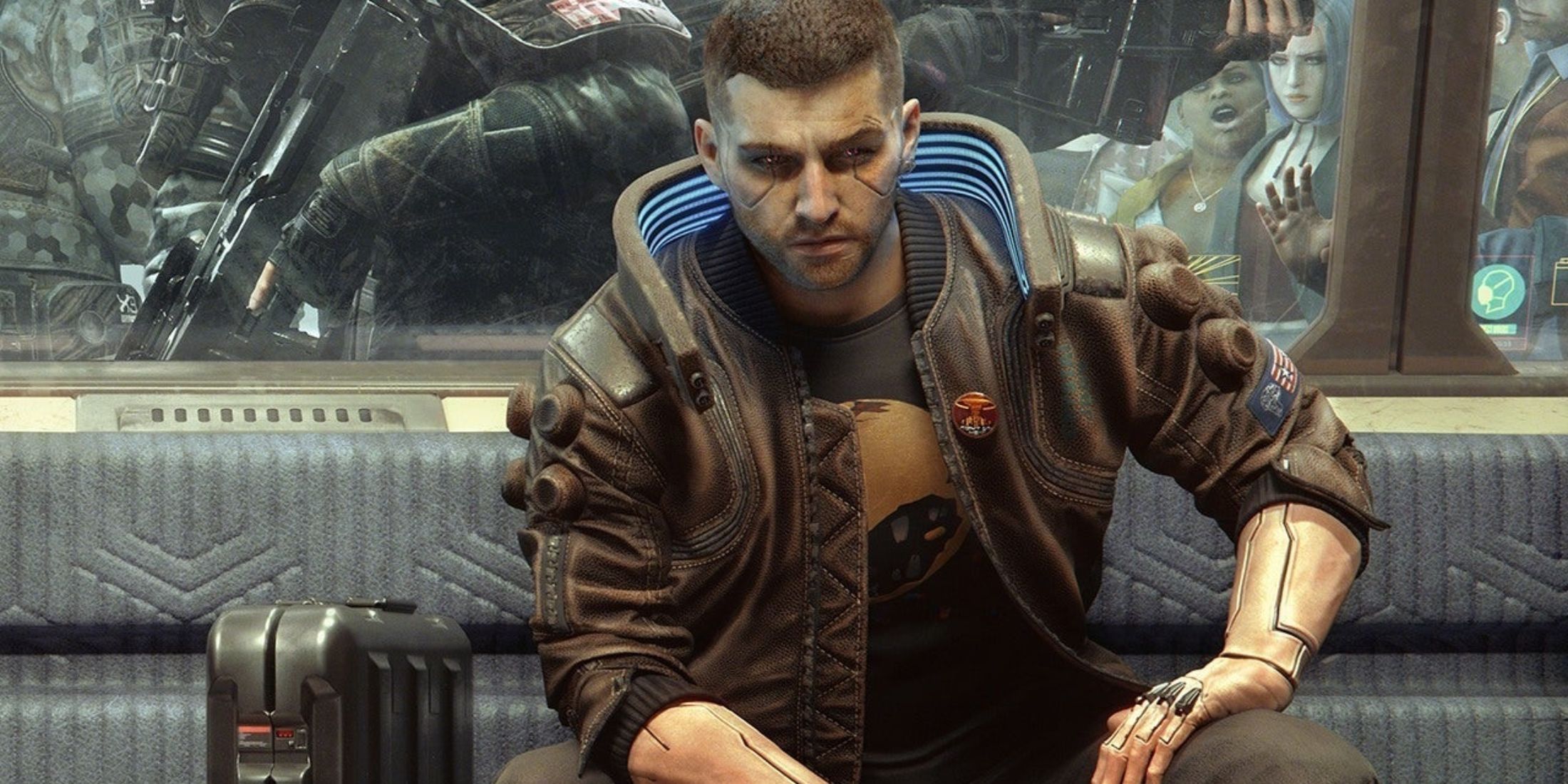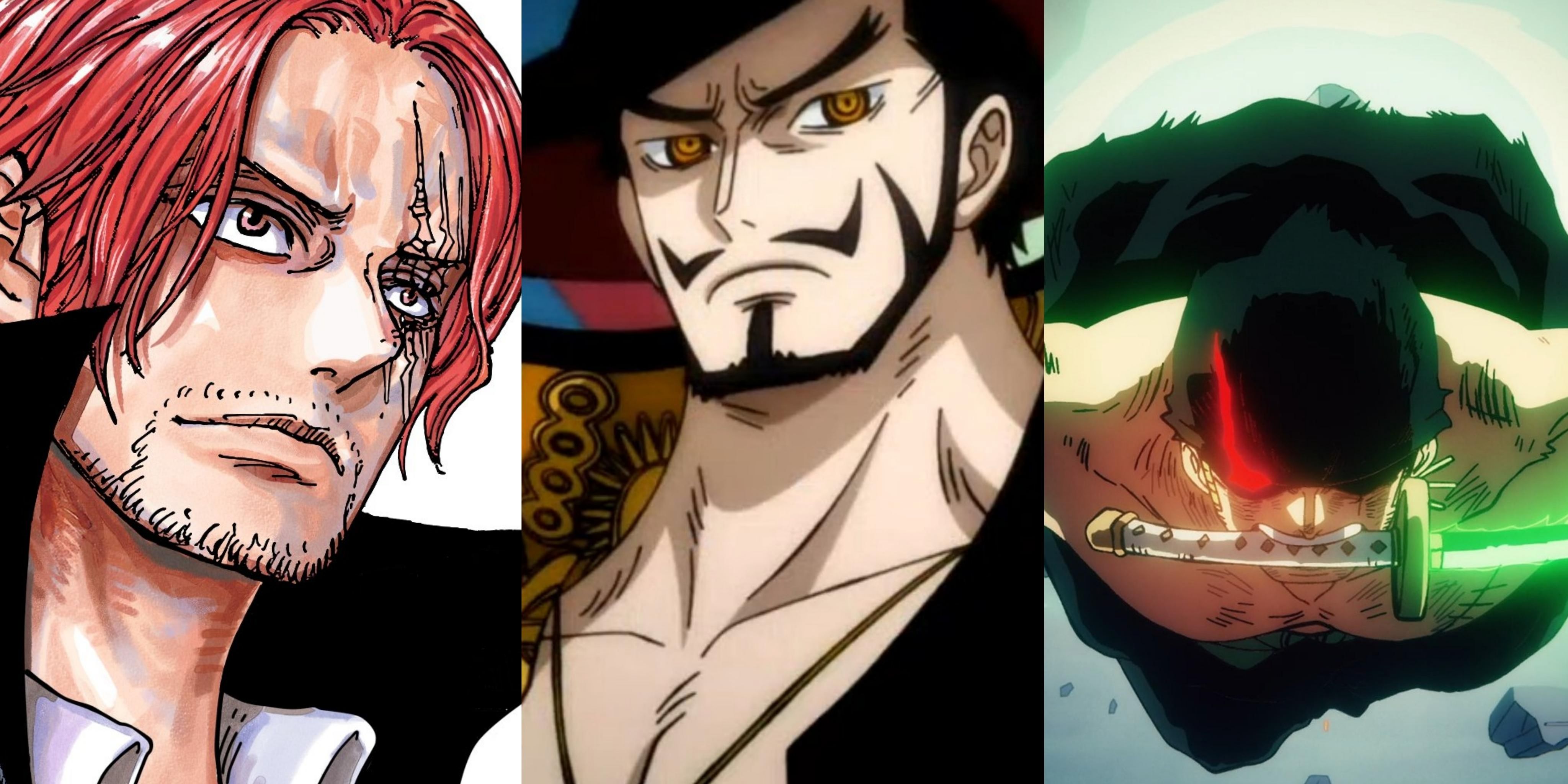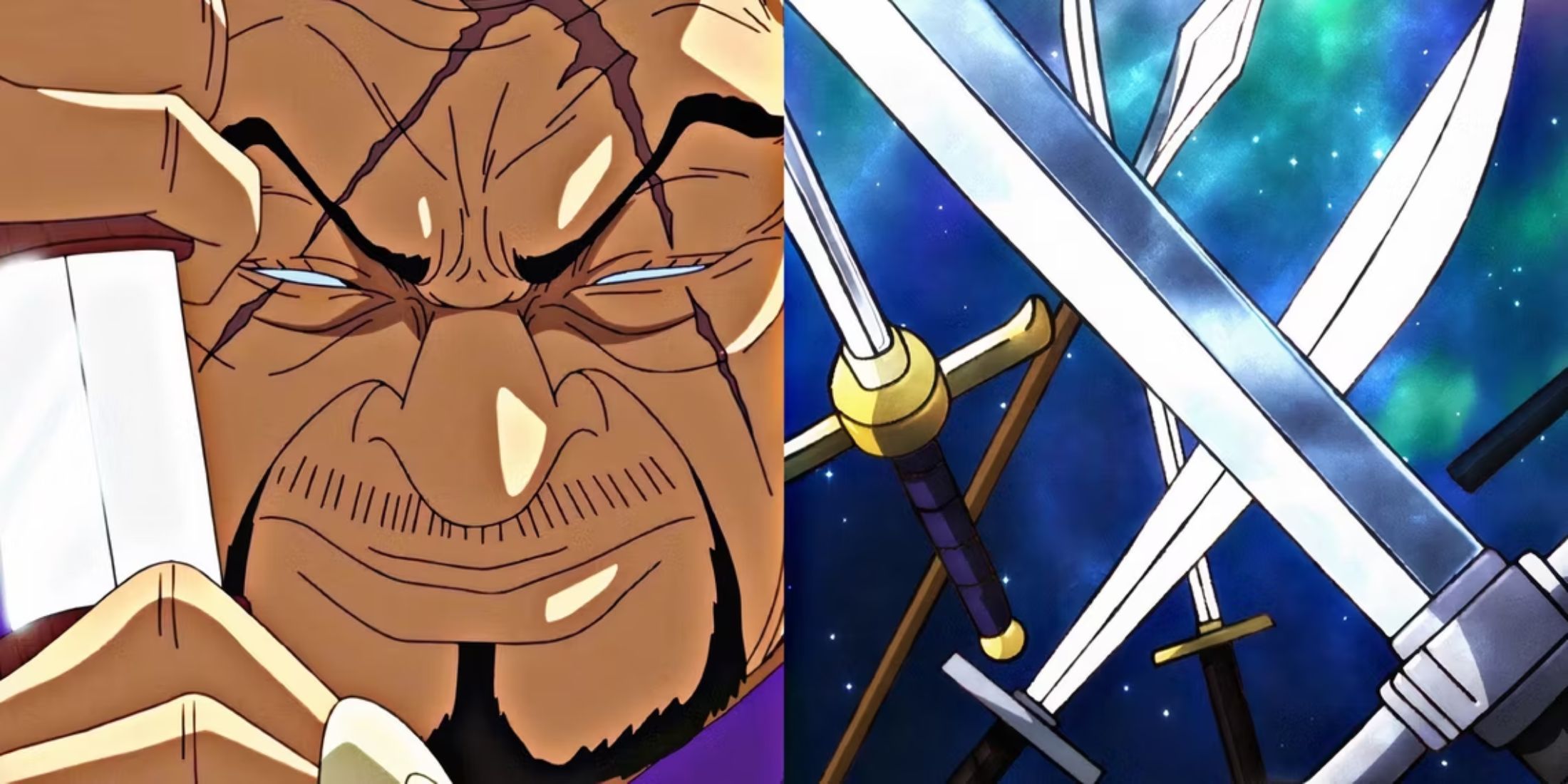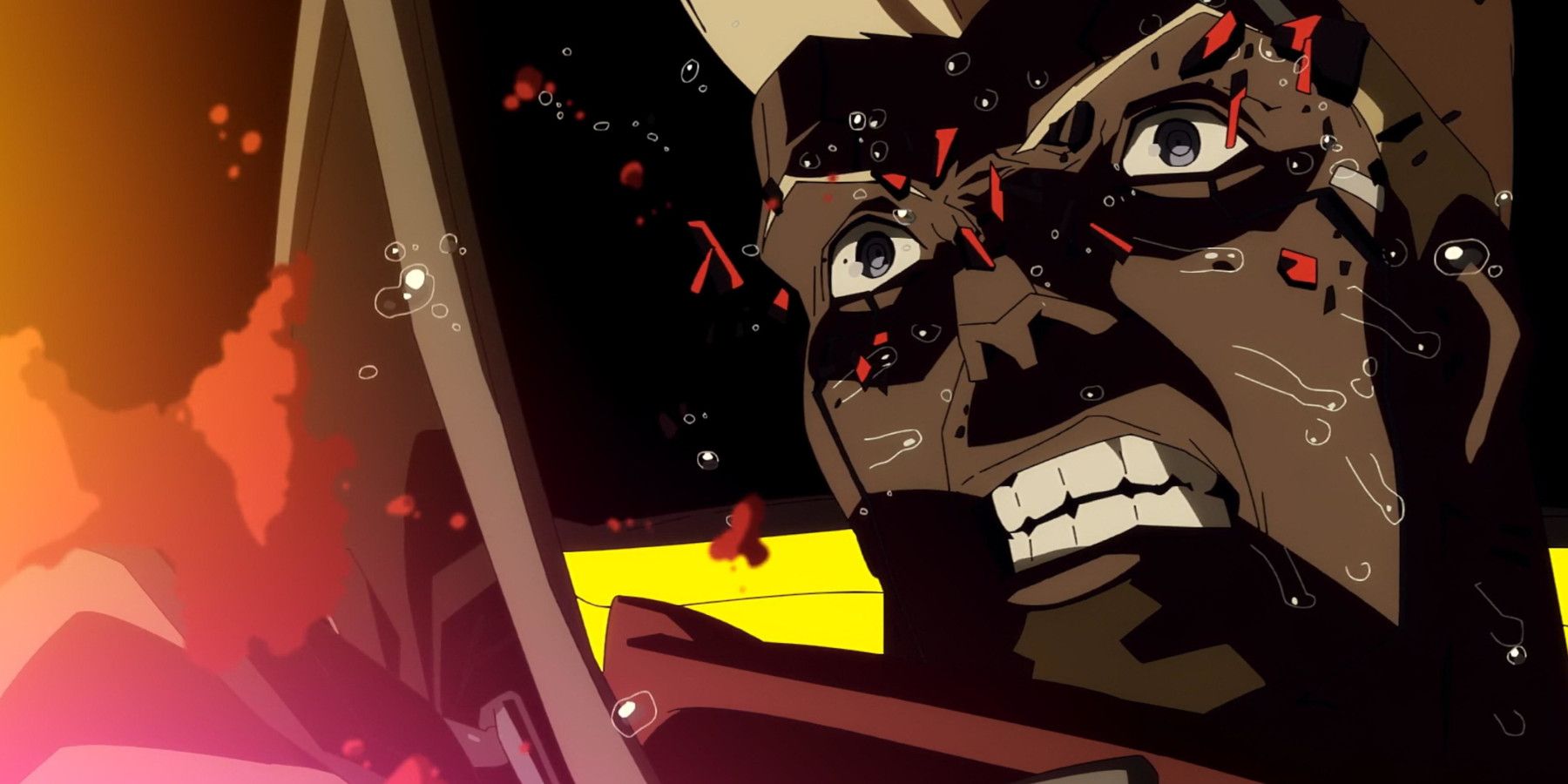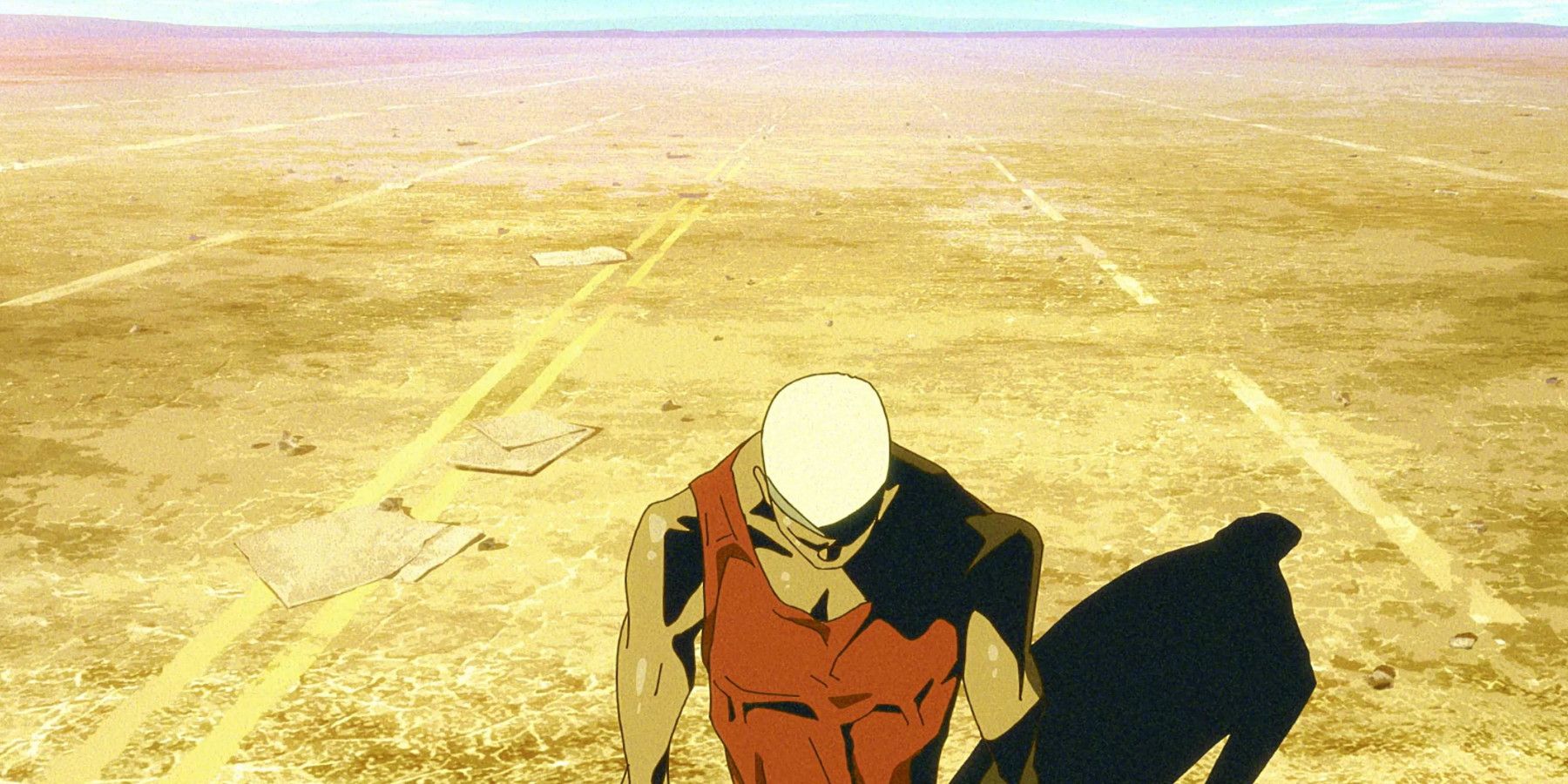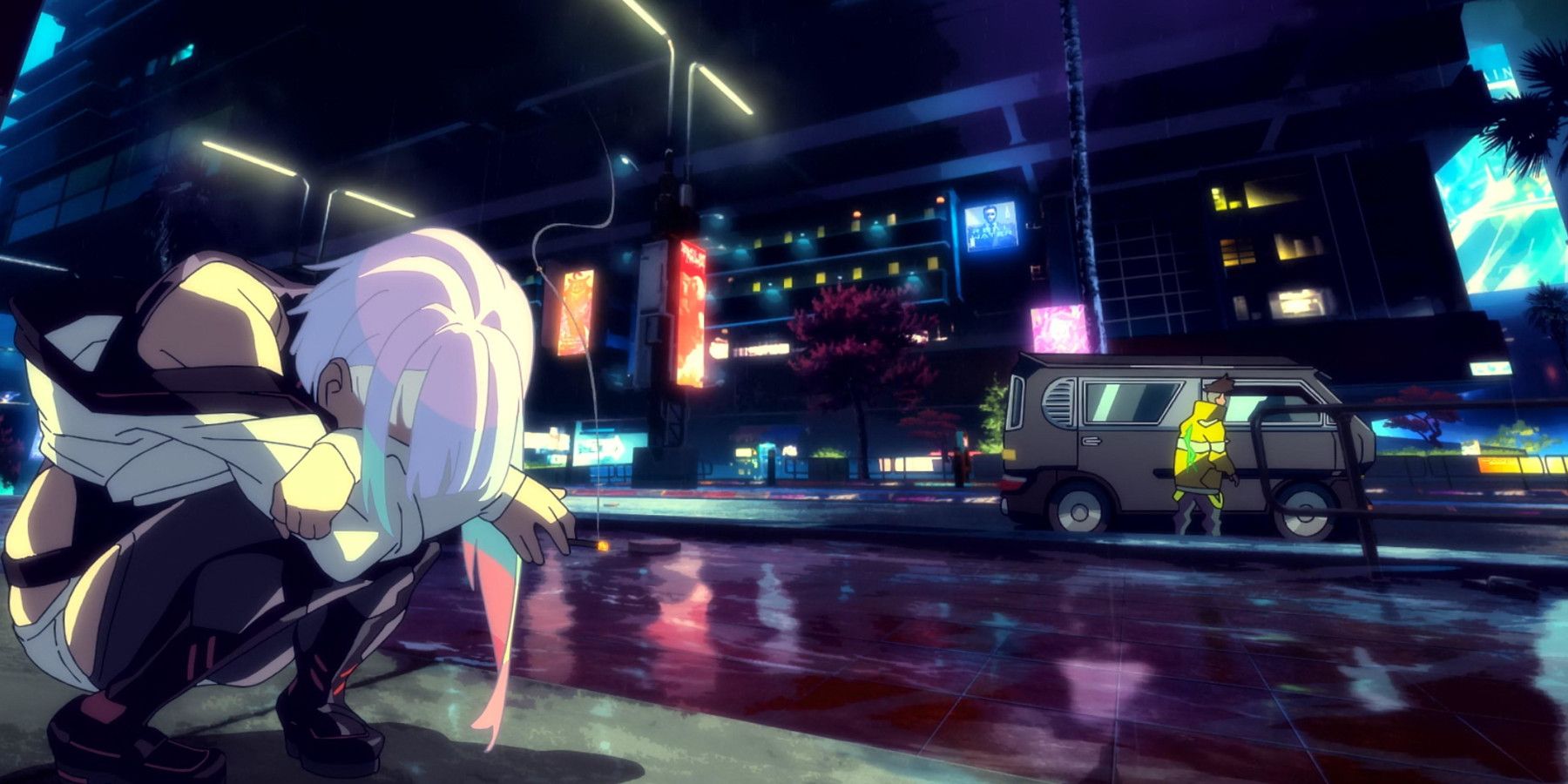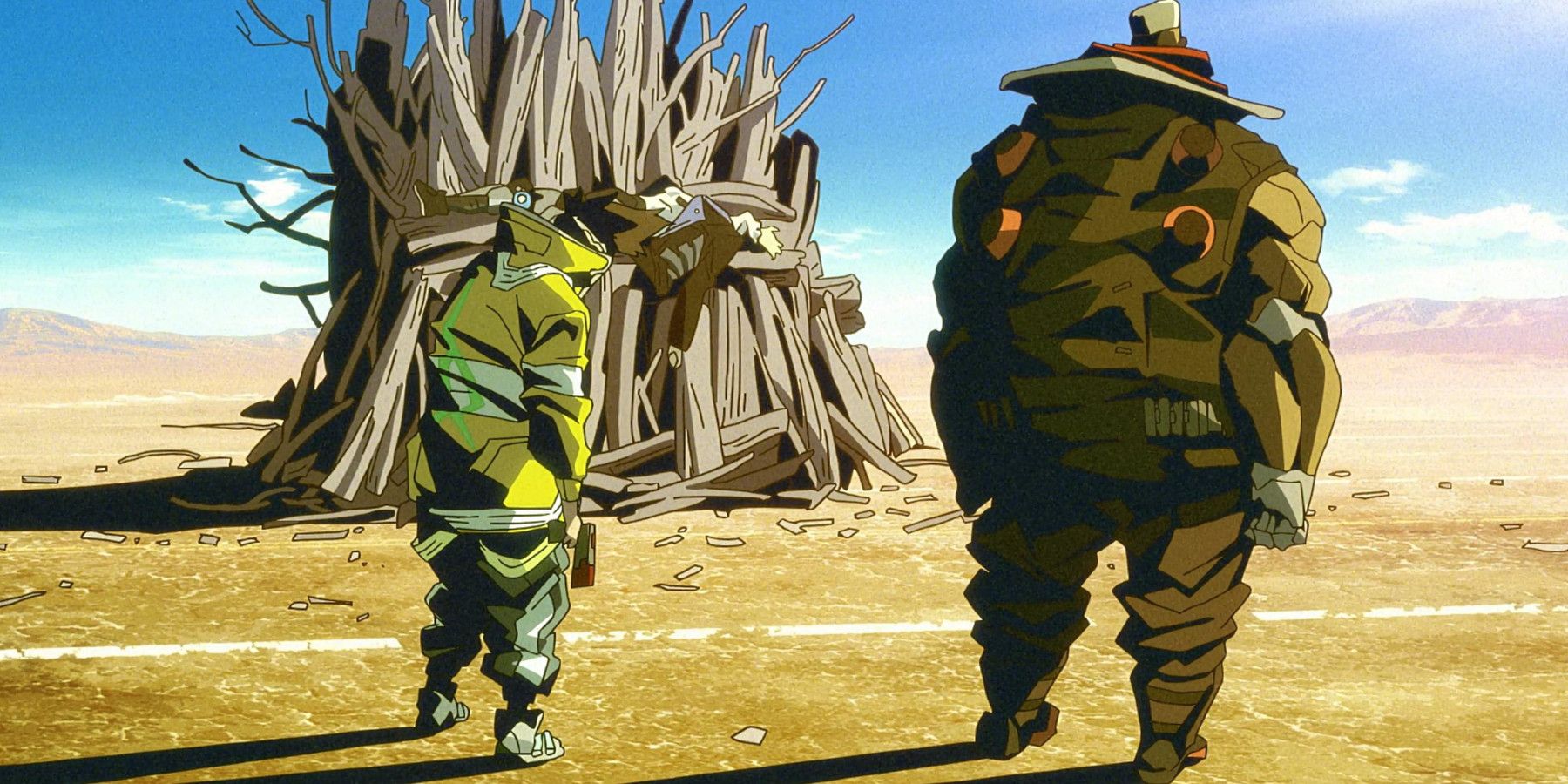Spoilers ahead for Cyberpunk Edgerunners, available to stream on Netflix.
Cyberpunk Edgerunners had plenty of great episodes and could scarcely be accused of having any bad ones in its ten-episode run, but one, in particular, marks a turning point. Not only in a narrative sense, carrying consequences for all episodes going forward, but in a production sense, marking when the series went from good to one of the best this year.
As most know, Edgerunners is produced by Studio Trigger and directed by Hiroyuki Imaishi (Gurren Lagann, Kill la Kill, Promare), perhaps the most popular director at the studio. But as common with anime, the episodes have their own individual directors, which helps divide up the work as well as allow parts of the story to carve their own identity, as evidenced by the different styles and plots used. The traditional narrative structure would dictate that after introductions, a rising action filled with several exciting moments will build to a grand climax, but some stories pull a neat trick with pacing. Somewhere around the middle of the series, when there are still plenty of episodes left, there will be a moment so shocking and "final" in its texture that what comes after is completely unexpected. This more or less describes Cyberpunk Edgerunners #6.
Something Different
Within the first minute of #6, it should be apparent to viewers that something about the episode is different. Something about the visuals is different and the silent contemplation of the opening moments seems to be understated and composed, not as loud - at least not yet. This feeling throughout the episode is due in large part to Animation Director (AD) Kai Ikarashi.
Ikarashi has gained popularity in animation circles in recent years, especially in their work with Trigger on two entries in the Gridman Universe. They were an AD on SSSS Gridman #9 and a few years later took on the same role with SSSS Dynazenon #10, two episodes that were beloved for their unique style, tone, and storytelling.
While Ikarashi was not the episode director for these entries, the overall feel of these episodes has come to be associated with him and the kind of energy he brings to these productions. Among the most notable traits is how raw and emotional the animation and artwork are throughout the entire episode, even if they lack the cleanliness of other episodes.
Whether it's Gridman, Dynazenon, or Edgerunners, Ikarashi's episodes have this almost rough look to them, where character designs lack a certain level of polish seen in other episodes. However, this is the furthest thing from a detractor in motion, where it becomes clear that this is an intentional style choice, meant to wring out these characters for as much drama as possible.
All the little imperfections come together wonderfully. Character acting can be bold and stylistic, but the posing and facial expressions can also be ridiculously intense and more alive than a lot of animated acting. It helps that these moments are framed from such striking angles that fit a ludicrous amount of detail into each scene.
Something Strange
Ikarashi's visual style isn't just an enhancement of the narratives he's tackling, but arguably one of the best ways to tell them. It wouldn't be surprising if their involvement in Edgerunners #6 was directly related to their involvement in Dynazenon #10, an episode with a similar penchant for visual trickery.
For those that haven't watched Dynazenon, some background: in episode 10 of that series, a new monster appears that makes objects and people suddenly disappear. The only traces left by the people and things that disappear are shadows on the ground. Moreover, characters disappearing happens suddenly and without any noise or effect.
Traditionally, someone disappearing might be accompanied by some ominous effect or visual cue. Take for instance the snap in Avengers Infinity War, where characters faded into ash with an almost wind-like whooshing effect. Now imagine if one frame they were there and the next they were just gone.
It's a trick that arguably works better in animation, almost like a play on animation errors where characters disappear in a frame. In Edgerunners, characters aren't necessarily disappearing, but rather one character is experiencing hallucinations. Maine, a character the audience has gotten to know over the five episodes prior, is experiencing Cyberpsychosis.
Something Depressing
Up to this point in the story, Maine had been something of a mentor character to David, the protagonist, and if anything, was someone David aspired to be like. There was no indication that he was suffering from the early stages of Cyberpsychosis, and it begins a plot thread that is introduced and ended in this episode.
It's such a sudden occurrence that it could be counted against the show, but considered as an allegory for the sudden and unexpected onset of mental conditions, it actually works. No one saw it coming, and if they did, it was something that had been dealt with in private. The audience learns of all this through David's eyes, but they see through Maine's as well.
The episode depicts the degradation of his mind in a very clever way that also blends multiple scenes together, keeping the story moving at a clean pace. Maine is arguing with Dorio about his condition and suddenly, it's daytime, and a confused David looks into Maine's eyes, right at the audience.
Ikarashi's direction was always cool and enhanced what was already some of the most important episodes in the respective series, but Edgerunners employs his skills in the most sinister of ways. It's truly a gut punch to watch this character go through something so painful and to know where it's heading from the start.
Something Glorious
There's a lot to unpack besides Maine's psychosis, from Lucy's reluctance to step in for Kiwi to David and Lucy's continually developing relationship, to David's own inner conflict. Everything seems to snowball until a conclusion where the police, Trauma Team, and the deadliest police force, Maxtac, all swarm the building.
There's something genuinely terrifying about Maine at this moment, covered in blood, ceasing to care about the wellbeing of his hostage, and even using their corpse as a weapon. Simultaneously, his unending rageful vendetta against the city and its institutions is at its peak in his final moments, and might just be the epitome of cyberpunk.
Watching Trauma Team, the same corrupt group that left David's mother to die, get blown out of the sky after they attempted to leave the cops to their fate, feels like justice for David's mother and all others like her. It's as if Maine embraces the end with whatever is left of his own mind before he just becomes another "psycho." It's the kind of story befitting any legend in Cyberpunk lore.
The episode began with a fragment of Maine's past, a glance into his younger days, as he found himself running until the end of a long road. When the episode ends, David passes them, making it clear that not only is there still a road left for David to travel but that he will run it until he reaches his own end.
Together, Animation Kai Ikarashi, Animation Director Ichigo Kanno, and Episode Director Yoshiyuki Kaneko helmed no doubt the greatest episode of Cyberpunk Edgerunners. It's a tragedy that sends the series in an unexpected direction without the raw and uncompromising vision of these artists, this episode might not have left the impact it had.
